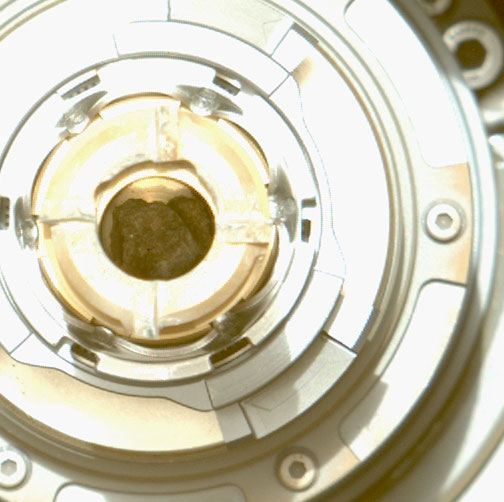2 min read

Recently on Mars, Perseverance wrestled with sampling a crumbly rock and continued our boulder-bonanza!
We’ve been exploring the Onahu outcrop for the past 3 weeks, having previously performed an abrasion named Ouzel Falls. We saw from this abrasion that the rock is most likely a conglomerate worth sampling, but was also likely to be crumbly. The team therefore elected to drive and reposition the rover at an angle more conducive to getting rock inside the sample tube (and away from rover parts, given that pebbles in our bit carousel previously caused the team some headaches before we finally dislodged them). We also added in extra Mastcam-Z imaging of the tube (see image above) to confirm that the rock made it in there before we sealed the sample. Although rock is visible, we only collected ~1.3 cm of sample, so we elected to re-attempt sampling on the Ouzel Falls abrasion spot. Unfortunately, this crumbly conglomerate continues to evade us! We will therefore drive approximately 40 m to a location called Stone Man Pass and assess whether conglomerates of interest for sampling exist there.
In addition to our sampling attempts, we have been using Mastcam-Z and SuperCam to observe other nearby boulders. These include a rock we’ve named “Crystal Lake” that shows an interesting surface texture and may be composed of two different clast types; and “Milner Pass” which appears to have purple coatings.
Next up, we’ll be making our way towards the “margin unit”, the carbonate-bearing rocks located along the inner rim of Jezero. Our previous stop at Echo Creek revealed rocks consistent with the curvilinear unit, and so we’re still waiting in anticipation to encounter the margin unit. The margin unit is thought to be related to a regional olivine-and-carbonate-rich unit that spans thousands of square kilometers. Therefore, assessing whether these deposits are similar to the olivine-rich Séítah, or something new, will help us understand both the history of Jezero and of the surrounding area.
Mars 2020 is unique compared to previous rover missions in that, whilst we have the freedom to explore, eventually Perseverance will rendezvous with the sample return vehicle to hand off our samples for return to Earth. This mission is a marathon, not a sprint, so we’re taking time to enjoy the stops along the way!
Written by Eleni Ravanis, Student Collaborator at University of Hawaiʻi at Mānoa







